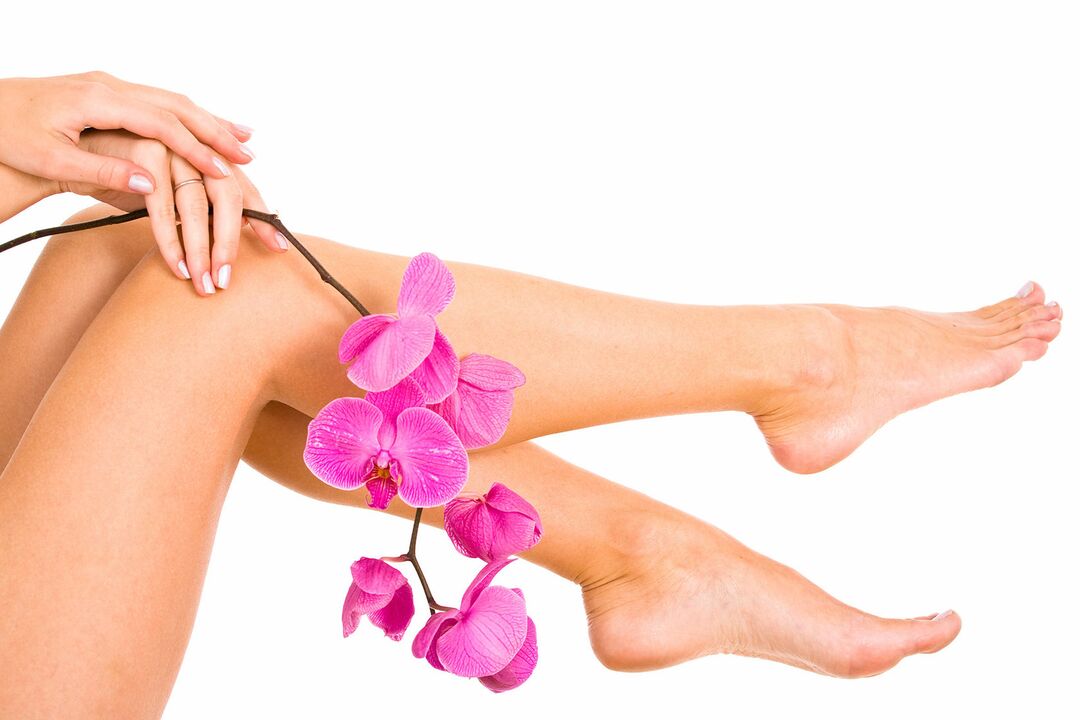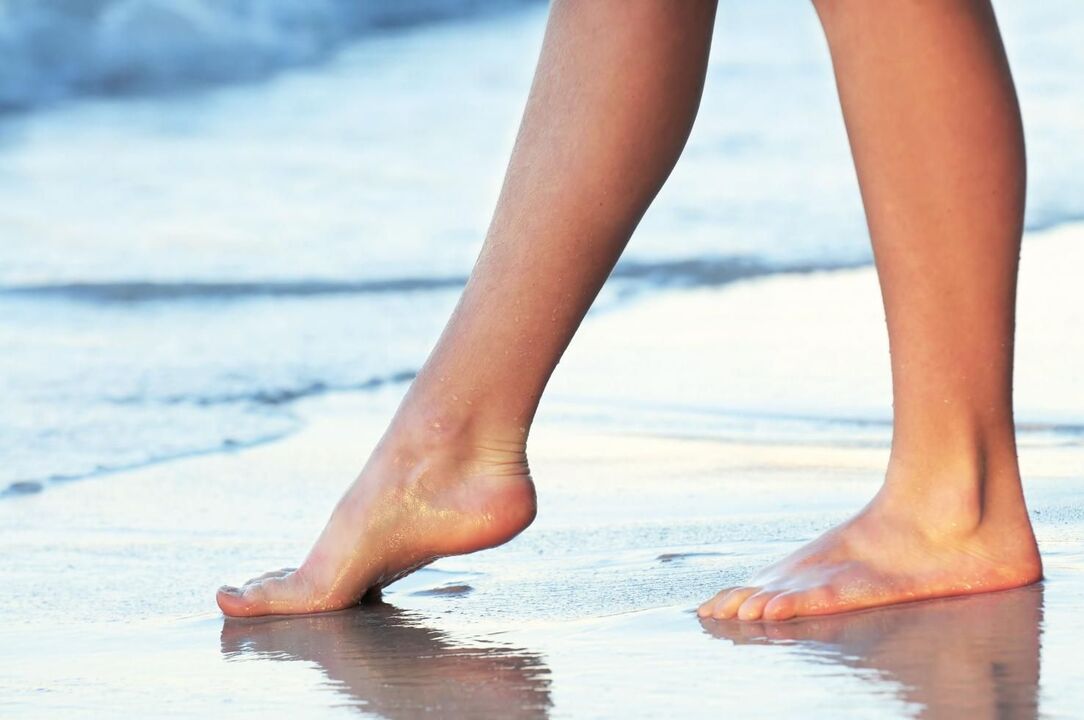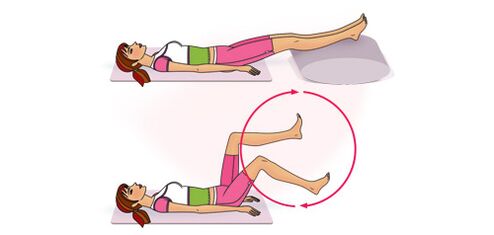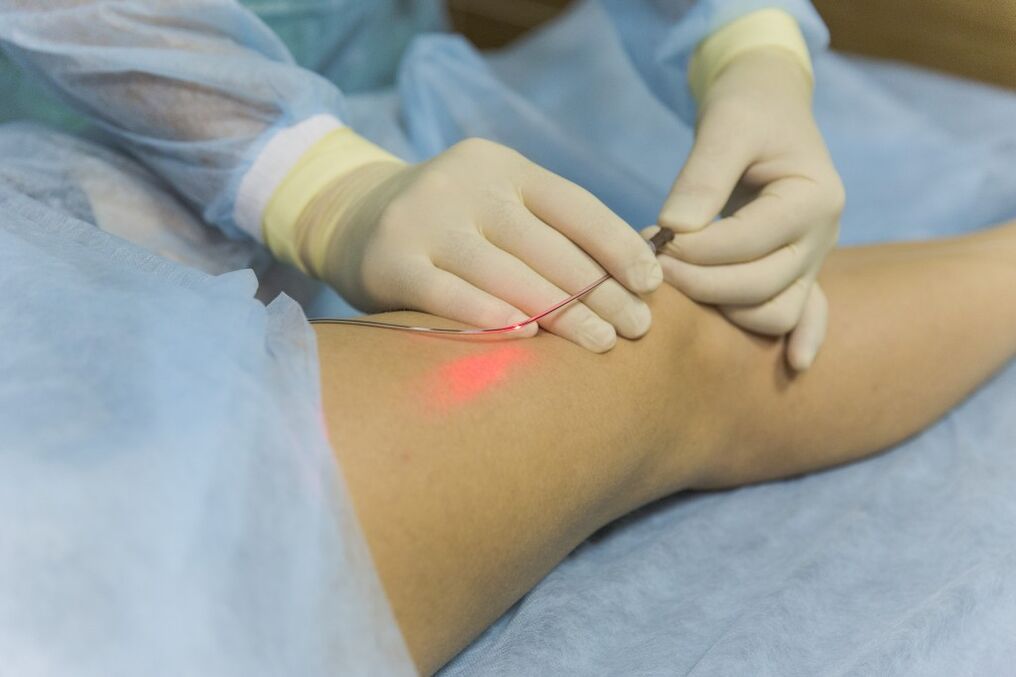
Varicose veins are a fairly common disease among the adult population. According to the World Health Association, about 40% of people are affected by this disease in varying degrees of severity.
The disease is more typical for women, every fifth representative of the fairer sex is susceptible to varicose veins. Men suffer from this disease to a lesser extent, and only 10% face this problem.
In the initial stages, the disease is of little concern and is not something dangerous to the patient's life, but later dangerous diseases can develop, for example, thrombophlebitis. The blood clots that form are already a serious threat to life.
Depending on the etiology, there are two types of varicose veins, shown in the table:
| Primary | Secondary | |
|---|---|---|
| The cause | Weakening, disorder of the vein wall structure | Disturbance of venous blood outflow due to improper operation of vascular valves |
| Aggravating factors | Overweight, pregnancy, work in a standing position, compression of veins by elements of clothing, congenital weakness of venous walls | The development of various types of tumors, disorders as a result of trauma |
Causes of disease
The essence of the disease lies in the abnormal increase in pressure in the surface vessels due to valve disorders, which normally facilitate the flow of venous blood in one direction (toward the heart). When they are disturbed, the valves weaken and the blood begins to stagnate in the veins, which leads to their stretching, the formation of knots, etc. In this case, the blood flow slows down, which leads to cell and tissue trophism disorders and the formation of ulcerative processes.
The main causes of the disease:
- genetic predisposition;
- long stay in an upright position;
- limited movement during the day;
- disorders of the endocrine system, both due to illness and taking hormonal drugs;
- pregnancy;
- physical activity of various types (at work, in the gym, at the dacha, etc. );
- lower limb injuries;
- bad habits, especially smoking.
Note.The risk group includes people who spend all day on their feet, sit and move little, for example, salespeople, teachers, drivers, people who sit at a computer, etc.
The thing is that people who sit for a long time compress blood vessels, and this slows down blood circulation. Therefore, varicose veins develop in this case regardless of age, and in those who stand for a long time, according to physical laws, blood creates constant pressure on the vessels, and as a result, they begin to deform, which leads to the development of the disease.
Also at risk are:
- women wearing high-heeled shoes;
- people who play sports with loads on their legs (strength sports, tennis);
- all people who work standing;
- people habitually cross one leg over the other when sitting;
- people who drink a lot of coffee and drinks containing alcohol, which contribute to the thickening of the blood and thus make it difficult for it to drain.
How to recognize the disease
The first sign of varicose veins is the appearance of fatigue in the legs at the end of the day, the appearance of swelling, for this reason the shoes become tight. Rare spasms and pains in the lower leg muscles are also possible.
You can visually observe the manifestation of the disease by the so-called stars, which consist of modified inflamed blood vessels. As varicose veins progress, irreversible pathologies develop in larger-diameter vessels that begin to appear under the skin. The knotty appearance of the latter is due to the refinement of the walls in certain places.
Main features
But in order to more precisely understand whether it is varicose veins or not, we list the main signs of the disease:
- pain and heaviness in legs;
- unpleasant warm, burning pain that passes along the veins;
- after a working day, leg swelling is clearly visible;
- nocturnal leg cramps;
- veins become wider, tortuous, denser to the touch;
- the epithelium of the legs becomes thicker and darker;
- Trophic ulcers are possible.
Prevention and treatment
If you recognize the symptoms of varicose veins, you should contact a specialist. Treatment and prevention of varicose veins requires contacting medical institutions.
Only a doctor, after determining the correct diagnosis, should determine the therapy and remove the causes. There are a number of simple rules, the observance of which can stop the development of the disease or even in some cases help to prevent the development of the disease.
The main ones are listed below:
Avoid temperature effects on the veins . Hot baths, saunas, long exposure to the sun lead to a decrease in vascular tone, which causes blood stagnation, especially in the legs;Physical activity . All sports, except those with a heavy load, are beneficial for the cardiovascular system. Light running, aerobics, morning exercises and fitness strengthen the veins especially well.Excessive weight . For several reasons, the condition of blood and blood vessels worsens in obese people. Greater volume creates greater pressure, the heart has to work much harder to pump all the blood, excess cholesterol leads to clogging of blood vessels, development of arteriosclerosis, thrombosis and other diseases of the cardiovascular system.Advice.If you do not want to have varicose veins and feel cheerful, carefully monitor your weight and prevent the development of obesity.
Tight constrictive clothing hinders blood circulation . Get rid of tight socks, stockings and tights with tight elastic bands, don't tighten the belt too much and generally eliminate any compression of the veins.
It should be noted that there are special support socks and tights that prevent the development of varicose veins.Distribute the load during operation , change your position, don't be static for a long time.When sitting, do not cross one leg over the other . This interferes with the passage of venous blood through blood vessels.More movement . A static position for a long time in a sitting position, and especially an upright position, provokes the development of the disease due to increased pressure in the legs and slowing down of venous blood flow. Therefore, the more movement, the better. Take breaks, change positions, etc.Normalization of stool . Both constipation and diarrhea have a negative effect on the vascular system. Therefore, make sure that your diet includes foods rich in fiber. Avoid legumes, beer and yeast products if you are prone to bloating.Eat less salt . Salt and then drinking fluids causes swelling.Do limb exercises . Before going to bed and after waking up in the morning, it is good to do rotational movements of the fingers and toes for a few minutes, this will improve blood circulation.Avoid tight shoes , and the one with high heels.After a working day, at home, make it a rule to wash or rinse your feet in cold water.

Keep in mind that it is helpful to prevent varicose veins by walking barefoot in the dew or along the shore on the surf line, by wetting your feet.
In the event that there are no manifestations of varicose veins, but there is a predisposition to this disease, it will be useful to massage your legs daily. It is very easy to do. The technique consists of stroking the legs and kneading.
Note.Massage is contraindicated if the doctor has diagnosed varicose veins!
Patients are advised to keep their lower limbs elevated while resting or sleeping. To do this, it is advisable to place your feet on the hill; to do this, use all available means, you can place a pillow or pillow.
A contrast shower for the feet helps, or after a warm shower, rinse the feet with cold or cool water.
Swimming is indicated for varicose veins, it not only forces all muscle groups to work, but also perfectly strengthens blood vessels. Morning jogging, hiking, biking and skiing are also good options.
Physiotherapy
Treatment and prevention of varicose veins will be successful if you do gymnastics.
Below are simple exercises you can do without distracting yourself from work or household chores:
- Calf raising. The instructions to follow are simple. To do this, you need to stand straight, legs together, feet side by side. Do the lift about 30 times, rising on your toes and returning to the starting position. There are three types of exercises:
- toes side by side, heels side by side;
- toes side by side, heels apart;
- heels close, toes apart.
It is recommended to perform all variations 20-30 times for each position;
- Rolling on your feet. Stand straight with your feet together. Turn from your toes to your heels. Repeat on the inside and back of the foot. The number of repetitions is arbitrary, spend 2-3 minutes on the exercises.
- Bicycle. It can be performed both lying down and sitting in a chair. Use your feet to imitate riding a bicycle, as shown in the photo. Legs should be fully straightened when performing. 30-40 repetitions will be enough.

Nutrition and diet
Proper nutrition and following a diet not only helps to get rid of varicose veins, but also has a positive effect on the body as a whole. Enrich your diet with plant-based foods, especially fruits, and eliminate fatty, spicy, salty and smoked foods that lead to blood thickening and the formation of blood clots.
A vegetarian diet is preferable, but as it is not suitable for everyone, try to give priority to lean meat, fish and animal proteins of marine origin. Reduce alcohol consumption as much as possible, eat more fortified foods, especially rich in vitamins A, B, C and E.
The first and last help to strengthen the epithelial vascular walls, and also increase the overall immunity of the organism. Regular intake of vitamins C and E helps to strengthen the collagen fibers of blood vessels and their valves.
Scientists have proven the positive effect of fresh garlic consumption on the cardiovascular system, thanks to its unique chemical composition. Let's just focus on the effect.
Garlic prevents the formation of blood clots and promotes the dissolution of existing ones, preventing the development of arteriosclerosis and varicose veins. In addition, it stimulates the body's defense mechanisms and helps prevent colds.
It is important to note that you should not use too much garlic. It is enough to eat a few cloves a day. If you are too addicted to this spice, you can end up with stomach and heart problems.
Some basic rules of nutrition:
- lean meat, stewed or boiled, is recommended;
- lactic acid products such as yogurt, kefir and cheeses are very healthy, especially when their content is low;
- increase your consumption of vegetables, whole grains and legumes. They have a high content of fiber and potassium compounds. The first helps in the fight against slag in the body and constipation; potassium regulates the channels during water and salt metabolism in body tissues. Keep in mind that industrial processing reduces the amount of useful microelements and eliminates the beneficial properties of fibers;
- it is advisable to reduce the amount of fast (sweet) carbohydrates and salt to minimum values;
- For cooking, use dishes with a special coating that allows you to cook food without using fat that heats up on the surface;
- replace animal fats with vegetable fats, do not cook twice in the same oil;
- For salad dressing, use olive oil, low-calorie sour cream, kefir or yogurt.
Treatment of varicose veins
Varicose veins are quite difficult to treat and it is much easier to prevent their occurrence or control the development of the disease by slowing down its progression. When the disease is diagnosed, according to statistics, about 15-20% of patients are completely cured, but you should not despair.
Damaged veins have a stretched structure, which causes stagnant processes in them. In the case of serious vascular lesions, they require surgical treatment by removing the ear to avoid further spread of the disease to healthy veins.
Today there are many methods for treating this disease. In most cases, minimally invasive techniques are involved, and only in an advanced state does the patient end up on the operating table.
Among the most commonly used, we single out the following:
Sclerotherapy. In simple words, vein removal without direct surgical intervention. The essence is that a special drug is injected into the damaged blood vessel with a needle, which glues the walls of the veins, and after about a week, it recedes on its own.Laser therapy. A special probe connected to a laser is inserted into the vein through a micro-incision. The vein is burned from the inside, which leads to sticking of its walls and subsequent resorption.

Basic treatment techniques
Early detection of the disease contributes to successful treatment if it is started on time. The more developed varicose veins are, the more difficult the disease is to treat.
Among the main techniques, therapeutic massage has proven itself well, but only if it is performed by a specialist. Thanks to proper manipulations in the legs, blood circulation increases and congestion of blood vessels decreases.
Treatment often involves wrapping the limb in elastic bandages or wearing special compression stockings. This helps to avoid the development of the disease and the occurrence of complications such as thrombophlebitis.
The additional compression that is created compresses the veins, their lumens narrow, which creates increased blood flow, reducing congestion in the vessels. This prevents blood clotting and the formation of blood clots.
Treatment also includes following all the basic preventive measures described above. Among them, great attention should be paid to diets, the fight against excess weight, regular rest and therapeutic exercises.
After consultation with the doctor, drug therapy and the use of various creams and ointments are prescribed. Medicines taken orally are anti-inflammatory and analgesic, and also help to thin the blood and strengthen the walls of blood vessels.
The cream for the prevention and treatment of varicose veins gives the same result. The price of such drugs is affordable, they are available without a prescription. Their use does not cause complications, but it is still advisable to get professional advice from a doctor.
Traditional methods of treatment
Treatment and prevention of varicose veins with traditional medicine is not a cure for the disease, but it can improve the results of basic treatment and relieve symptoms, especially since it is convenient to use at home.
The most popular methods are:
- baths with a decoction of medicinal herbs (St. John's wort, chamomile, plantain, etc. ), which help strengthen blood vessels and increase blood flow;
- poultices with sea buckthorn oil or aloe juice have an excellent wound healing effect and are used to treat eczema and trophic ulcers (honey applications can also be used for this purpose);
- the use of decoctions or tinctures of plants that help thin the blood (hawthorn, licorice or angelica root, sweet clover, etc. ).
Complications of varicose veins
If varicose veins are not treated or not taken seriously, then the stale processes will progress, causing the development of the disease and causing a number of accompanying pathologies, which significantly worsens the general condition and reduces the comfort of life. The nutrition of the epithelial layers of the skin deteriorates.
This causes the appearance of eczema, necrosis or trophic ulcers, which become chronic. As a result of the formation of blood clots, the veins become abnormally tortuous and strongly bulging.
Lime begins to settle in them and the so-calledNodules that appear may burst and bleed. Swelling of the legs becomes permanent and "elephantiasis" appears.












































